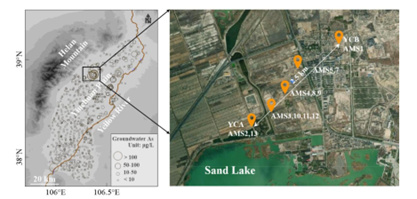Keywords
Water resources, groundwater, arsenic fate in soil, numerical modeling
Description
Groundwater arsenic of natural origin is a global issue affecting the health of an estimated 100-200 million people in >70 countries. A series of column experiments have been performed at SUSTech, China, to understand arsenic transport and fate in sedimentary aquifers and predict contamination potential to groundwater resources. The experiments aimed to study in-situ remediation approaches using iron mineral (trans)formation. This master thesis aims to replicate the column experiments with a numerical model using the software PHREEQC to quantify the processes governing arsenic immobilization and iron mineral (trans)formation in anoxic groundwater systems.
Goal
Perform numerical simulations of arsenic immobilization to represent column experiments and use numerical modeling to investigate different in-situ remediation approaches to mitigate arsenic contamination in groundwater.
Skills you will learn
- Numerical modeling of reactive transport
- Data analysis
- Water resources assessment, for groundwater resources in particular
Requirements
- Interest in the use of modeling software such as PHREEQC with MATLAB or Python
- Motivation to work closely with researchers at SUSTech in China, including a funded visit (travel and accommodation costs) of several weeks (duration depending upon students’ interest) at SUSTech. Potential extension of the project in a joint PhD.
Project start
Anytime
Location
Subsurface Environmental Processes Group (Eawag – ETH Zurich)
Southern University of Science and Technology, Shenzhen, China
Project type
Master Thesis
Contact details
Prof. Joaquin Jimenez-Martinez (jjimenez@ethz.ch)
Dr. Anne Imig (anneimig@sustech.edu.cn)
Dr. Zengyi Li (lizy@mail.sustech.edu.cn)
